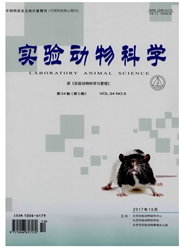

 中文摘要:
中文摘要:
目的常用大鼠移植性肝癌模型制作方法存在诸多不足,通过对直接注射法的改良以解决其缺陷。方法将90只Wistar大鼠随机分成3组,每组30只,分别以直接注射法、瘤块种植法和改良注射法进行模型制作,观察动物模型的肿瘤生长情况和动物模型的生存情况。结果术后第8天对3组大鼠进行比较,改良注射法模型组(C组)的肿瘤最大直径、体积和质量与直接注射法模型组(A组)、瘤块种植法模型组(B组)间差异并不显著(P〉0.05),具有可行性,在肿瘤移植的成功率方面以改良注射法模型组最高;在腹水和腹壁瘤发生率方面C组明显低于A、B两组(P〈0.01);生存时间长于A、B两组(P〈0.01)。结论基于易行性和重复性考虑而产生的改良注射法,优化了直接注射法的实验操作方法、弥补了直接注射法的缺陷,很好地控制了实验条件,既拥有直接注射法的易行性,又提升了其可重复性,同时保证了动物模型的适用性和可靠性。
 英文摘要:
英文摘要:
Objective Commonly transplanted hepatoma in rats modeling approach has many deficiencies, improved by the direct injection method to address its shortcomings. Methods 90 Wistar rats were randomly divided into three groups, n = 30, respectively, and were produced to be liver cancer animal models by adapting the Tumor Block Planting method, the Direct Injection method and the Improved Injection method to observe the animal model of tumor growth and survival of animal models. Results 8 days after surgery , in compared the improved injection model group (group C ) in the tumor diameter, volume and weight values with the direct injection model group (group A), tumor block planting model group (group B) the difference was not significant (P 〉 0.05) , in the success rate of transplantation tumors, the C group is the highest. In the incidence of as cites and abdominal wall tumor, the group C was significantly lower than A, B groups (P 〈 0.01 ) , survival time longer than the A, B groups (P 〈 0.01 ). Conclusion Easy and repeatable as a prerequisite to optimize the operation of the Direct Injection method process, to make up for the shortcomings of the Direct Injection Method, to strictly control experimental conditions, ultimately produced the Improved Injection method. At the same time, this approach ensures the applicability and reliability of Animal models of liver cancer.
 同期刊论文项目
同期刊论文项目
 同项目期刊论文
同项目期刊论文
 期刊信息
期刊信息
